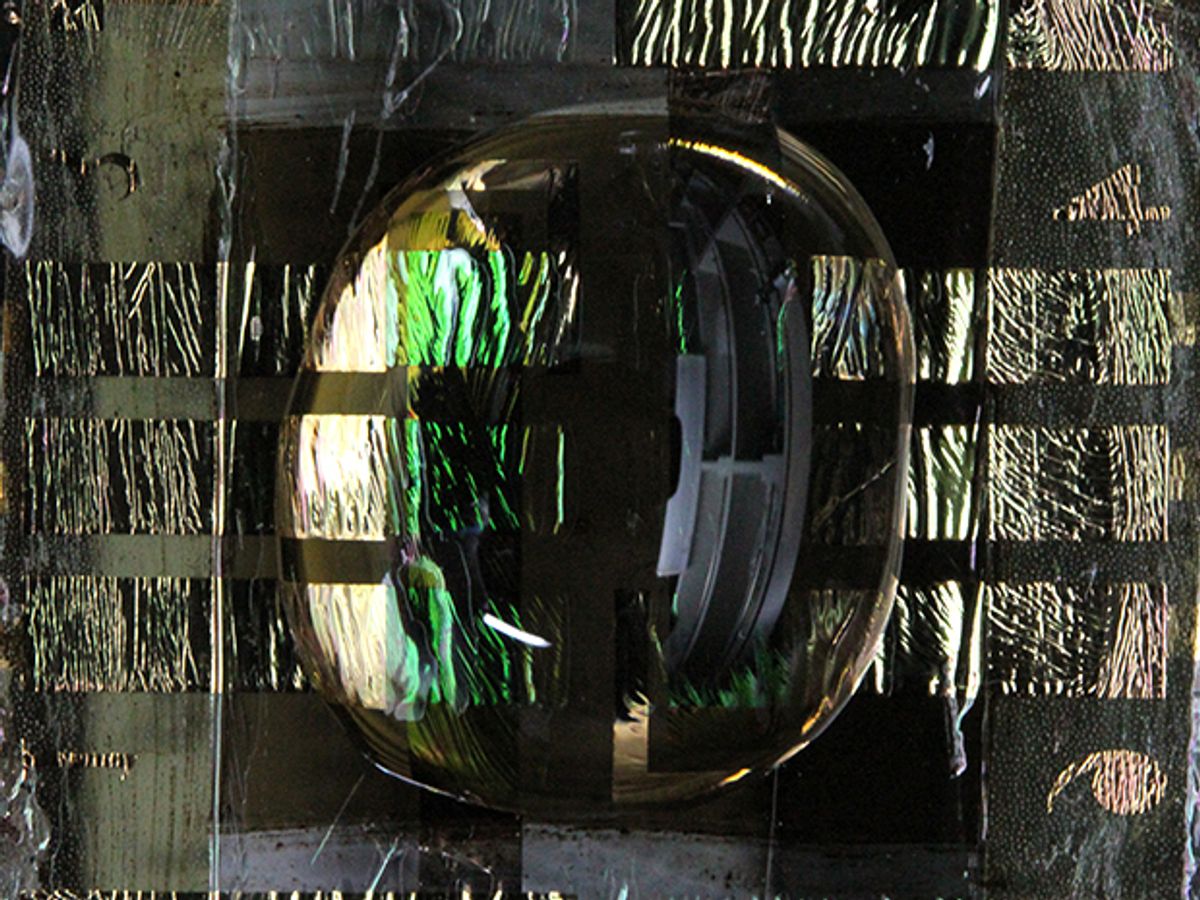Organic solar cells that are waterproof and stretchable could someday be sewn into washable electronic clothing. Researchers in Japan describe fabricating and testing several of these cells today in the journal Nature Energy.
The group, led by Takao Someya at the RIKEN Center for Emergent Matter Science in Saitama, Japan, says such cells could be used in health monitors woven into a patient’s clothing to analyze their heartbeat and body temperature, and help spot early warning signs of medical problems.
Wearable devices need a steady power supply of several milliwatts or more to continuously collect data. Ideally, such power sources would be woven into wearable textiles to harvest solar and other forms of energy from the environment, say Someya and his colleagues.
Energy-harvesting textiles should not only collect energy efficiently and be highly stretchable, but they should also prove stable in both air and water. However, achieving all three of these features at the same time remains difficult because the ultra-thin stretchable materials that scientists want to use to harvest energy are often permeable. As such, they can easily be ruined by oxygen, water vapor, and liquid water, the researchers say.
Now Someya and his colleagues have developed stretchy, flexible organic solar cells with a high energy conversion efficiency of 7.9 percent, generating 7.86 milliwatts of power per square centimeter under simulated sunlight of 100 milliwatts per square centimeter. This efficiency only decreased by 5.4 percent after the cells were immersed in water for two hours. Moreover, the efficiency of the cells remained at 80 percent of the original value even after 20 cycles of washing that compressed them to roughly half their size and exposed them to water for 100 minutes.
The cells were made of a material called PNTz4T that the researchers developed in earlier work. They were coated on both sides with 1-micron-thick layers of parylene that acts as a barrier to oxygen, water vapor, and liquid water. This roughly 3-micron-thick stack was then laminated between two pre-stretched acrylic-based elastic materials that were each 500 microns thick to further protect against water.
"Our solar cells can easily be attached onto clothes," says study co-author Kenjiro Fukuda at the RIKEN Center for Emergent Matter Science. "As textile-compatible power sources, our washable, lightweight, and stretchable organic photovoltaics will open a new avenue for use as a long-term power source system for wearables, electronic textiles, and other sensors for the Internet of Things in the future."
The elastomers, or elastic materials, the researchers used were simple, commercially available ones. Future research could use other elastomers to further improve performance, Fukuda says.
Charles Q. Choi is a science reporter who contributes regularly to IEEE Spectrum. He has written for Scientific American, The New York Times, Wired, and Science, among others.



